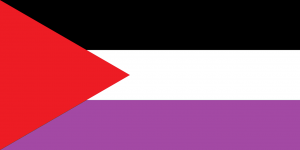Language/Mesopotamian-arabic/Grammar/Adjectives
Hi Mesopotamian Arabic learners! 😊
In this lesson, we will explore adjectives in Mesopotamian Arabic grammar. Adjectives are important descriptive words that help us add more meaning to our sentences. They are used to describe the qualities of a person, place, or thing. For example, if you want to describe a beautiful flower, you can use the Mesopotamian Arabic adjective "جميل" (jameel), which means beautiful.
Finish this lesson and explore these related pages: Questions, Pronouns & Negation.
What are adjectives?[edit | edit source]
Adjectives are words that describe or modify nouns. They provide information about the size, color, shape, age, texture, personality, and many other aspects of the noun. In Mesopotamian Arabic, adjectives usually come after the noun they describe. For example:
| Mesopotamian Arabic | Pronunciation | English |
|---|---|---|
| ورد جميل | ward jameel | beautiful flower |
| بيت كبير | beyt kbeer | big house |
As you can see from the examples above, the noun comes before the adjective. This is different from English, where the adjective comes before the noun. To form an adjective in Mesopotamian Arabic, you usually add a suffix to the noun. For example, to make the noun "بيت" (beyt) meaning "house" into an adjective, you add the suffix "-ي" (-ee) to make it "بيتي" (beytee) which means "my house".
Types of adjectives[edit | edit source]
In Mesopotamian Arabic, there are two types of adjectives: qualitative adjectives and demonstrative adjectives.
Qualitative adjectives[edit | edit source]
Qualitative adjectives are used to describe the quality or characteristic of a noun. For example, the adjective "حلو" (haloo) means "sweet". You can use it to describe a sweet dessert or a sweet person. Here are some more examples:
| Mesopotamian Arabic | Pronunciation | English |
|---|---|---|
| رجل طويل | rjal taweel | tall man |
| كتاب جديد | ktab jadeed | new book |
To form qualitative adjectives, you usually add a suffix to the end of the noun. For example, to make the noun "شمس" (shems) which means "sun" into an adjective, you add the suffix "-ي" (-ee) to make it "شمسي" (shemsy) which means "sunny".
Demonstrative adjectives[edit | edit source]
Demonstrative adjectives are used to point out or identify a particular noun. They are usually placed before the noun they modify. In Mesopotamian Arabic, there are four demonstrative adjectives:
| Mesopotamian Arabic | Pronunciation | English |
|---|---|---|
| هذا | hatha | this |
| هذه | hathi | this |
| ذلك | dhalik | that |
| تلك | tilka | that |
Here is an example dialogue that demonstrates the use of demonstrative adjectives:
- Person 1: هذا الكتاب جديد (hatha alktab jadeed) (This book is new)
- Person 2: لا، ذلك الكتاب قديم (la, dhalik alktab gadeem) (No, that book is old)
Comparison of adjectives[edit | edit source]
In Mesopotamian Arabic, you can compare two or more nouns using comparative and superlative adjectives. Here are some examples:
| Mesopotamian Arabic | Pronunciation | English |
|---|---|---|
| رجل طويل | rjal taweel | tall man |
| رجل أطول | rjal a'twal | taller man |
| رجل الأطول | rjal al-a'twal | the tallest man |
As you can see from the examples above, the comparative form of the adjective "طويل" (taweel) meaning "tall" is "أطول" (a'twal) meaning "taller". The superlative form is "الأطول" (al-a'twal) meaning "the tallest".
Conclusion[edit | edit source]
Adjectives are important in Mesopotamian Arabic grammar as they help us describe the world around us. Understanding the different types of adjectives and their use in comparison is crucial for effective communication in Mesopotamian Arabic. To improve your Mesopotamian Arabic Grammar, you can also use the Polyglot Club website. Find native speakers and ask them any questions!
➡ If you have any questions, please ask them in the comments section below.
➡ Feel free to edit this wiki page if you think it can be improved. 😎
Excellent job on conquering this lesson! Consider delving into these related pages: Say Hello and Greetings in Mesopotamian Arabic, How to Use Be & How to Use Have.

